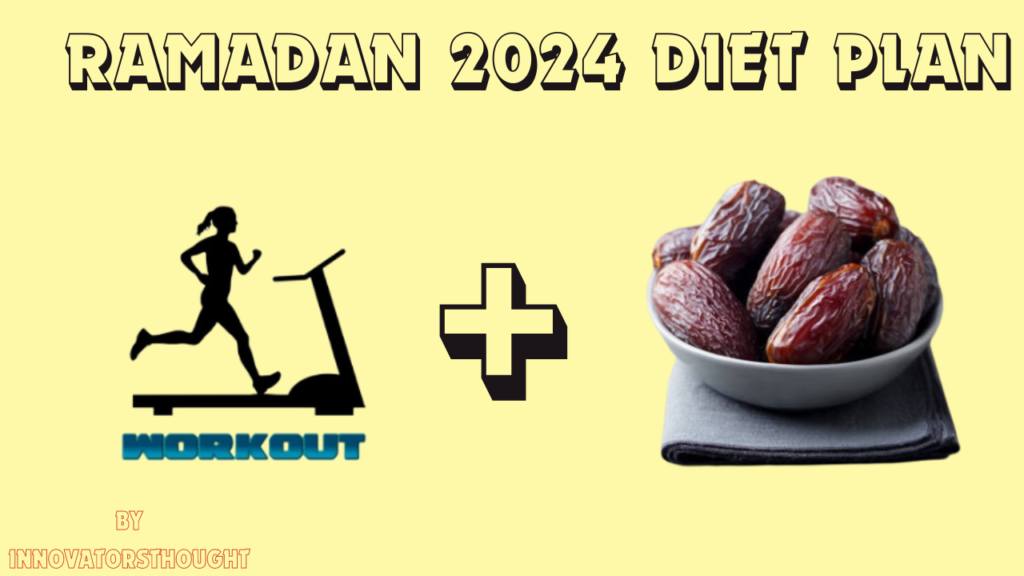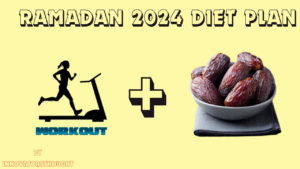Budget-Friendly Diet Plan for Ramadan 2024

Building muscle during Ramadan requires careful planning to ensure you meet your nutritional needs while fasting. Here’s a muscle-building Ramadan diet plan along with exercise recommendations:
Regular exercise during Ramadan helps maintain your fitness levels and prevents muscle loss. Even moderate-intensity activities like walking or yoga can help keep your body active and preserve muscle mass.
Incorporating exercise into your Ramadan routine can help you manage your weight by burning calories and maintaining muscle mass. It also aids in regulating metabolism, which may fluctuate during fasting.
Certainly! Here’s a budget-friendly Desi (South Asian) diet plan for muscle gain.
Plan 1:
Desi Muscle Gain Diet Plan
| Time | Meal | Food Items |
| Suhoor | Whole wheat paratha with scrambled eggs and a glass of milk. | |
| Oatmeal is cooked in milk with nuts and dried fruits. | ||
| Brown bread sandwich with cottage cheese (paneer) filling. | ||
| Iftar | Lentil soup (daal) or chicken soup. | |
| Grilled chicken or fish with brown rice and mixed vegetables. | ||
| Chickpea (chana) salad with cucumber, tomatoes, and lemon juice. | ||
| Roti (whole wheat flatbread) with lentil curry (daal) and yogurt. | ||
| Post-Iftar | Snack (Optional) | Boiled eggs with a banana or apple. |
| Mixed nuts and seeds (almonds, walnuts, pumpkin seeds). | ||
| Greek yogurt with honey and sliced fruits. |
Workout Tracking
| Day | Exercise | Duration | Intensity | Notes |
| Monday | Strength Training | 60 mins | High | Focus on compound exercises targeting multiple muscle groups. |
| Cardio | 30 mins | Moderate | Brisk walking or cycling. | |
| Tuesday | Rest | |||
| Wednesday | Strength Training | 45 mins | High | Circuit training with an emphasis on the upper body. |
| Cardio | 20 mins | Low | Light jogging or elliptical. | |
| Thursday | Rest | |||
| Friday | Strength Training | 60 mins | High | Full-body workout with emphasis on legs and core. |
| Cardio | 30 mins | Moderate | Swimming or rowing. | |
| Saturday | Rest | |||
| Sunday | Strength Training | 45 mins | High | Emphasis on the back and biceps. |
| Cardio | 20 mins | Low | Walking or stationary bike. |
Plan 2:
Another Diet Plan (Optional)
| Time | Meal | Food Items |
| Suhoor | Oatmeal topped with sliced bananas, almonds, and a scoop of protein powder. | |
| Whole grain toast with avocado, poached eggs, and a side of mixed berries. | ||
| Greek yogurt parfait with granola, mixed nuts, and honey. | ||
| Iftar | Lentil soup or vegetable broth. | |
| Grilled salmon or chicken breast with quinoa and roasted vegetables. | ||
| Mixed salad with olive oil and balsamic vinegar dressing. | ||
| Fruit salad or yogurt parfait for dessert. | ||
| Post-Iftar | Snack (Optional) | Protein shake or smoothie with whey protein, banana, spinach, and almond milk. |
| Greek yogurt with mixed nuts and honey. | ||
| Cottage cheese with pineapple chunks. |
Workout Tracking
| Day | Exercise | Duration | Intensity | Notes |
| Monday | Strength Training | 60 mins | High | Focus on compound exercises targeting multiple muscle groups. |
| Cardio | 30 mins | Moderate | Brisk walking or cycling. | |
| Tuesday | Rest | |||
| Wednesday | Strength Training | 45 mins | High | Circuit training with an emphasis on the upper body. |
| Cardio | 20 mins | Low | Light jogging or elliptical. | |
| Thursday | Rest | |||
| Friday | Strength Training | 60 mins | High | Full-body workout with emphasis on legs and core. |
| Cardio | 30 mins | Moderate | Swimming or rowing. | |
| Saturday | Rest | |||
| Sunday | Strength Training | 45 mins | High | Emphasis on the back and biceps. |
| Cardio | 20 mins | Low | Walking or stationary bike. |
You can choose any of the diet plans provided above that fit your budget. If you’re from South Asian countries, I would recommend following a Desi diet plan, as it can be highly beneficial and cost-effective for you. My advice would be to follow your chosen plan diligently and with consistency. These diet plans and workouts are for those who don’t want to give up on the gym during Ramadan and don’t want to compromise their bodies.
Also Read
https://innovatorsthought.com/a-culinary-experience-at-saltanat-restaurant-karachi/





